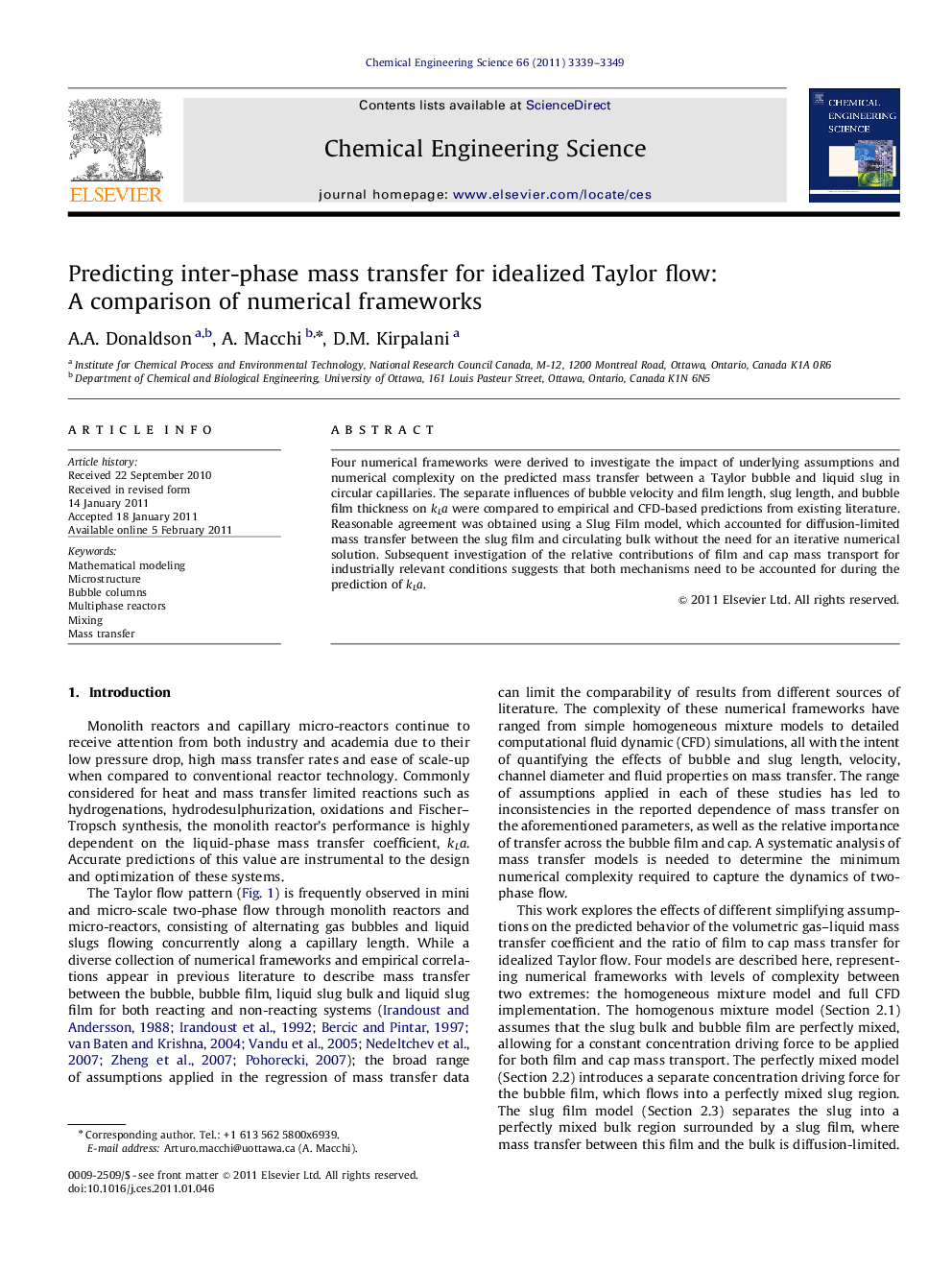| Article ID | Journal | Published Year | Pages | File Type |
|---|---|---|---|---|
| 156423 | Chemical Engineering Science | 2011 | 11 Pages |
Four numerical frameworks were derived to investigate the impact of underlying assumptions and numerical complexity on the predicted mass transfer between a Taylor bubble and liquid slug in circular capillaries. The separate influences of bubble velocity and film length, slug length, and bubble film thickness on kLa were compared to empirical and CFD-based predictions from existing literature. Reasonable agreement was obtained using a Slug Film model, which accounted for diffusion-limited mass transfer between the slug film and circulating bulk without the need for an iterative numerical solution. Subsequent investigation of the relative contributions of film and cap mass transport for industrially relevant conditions suggests that both mechanisms need to be accounted for during the prediction of kLa.
